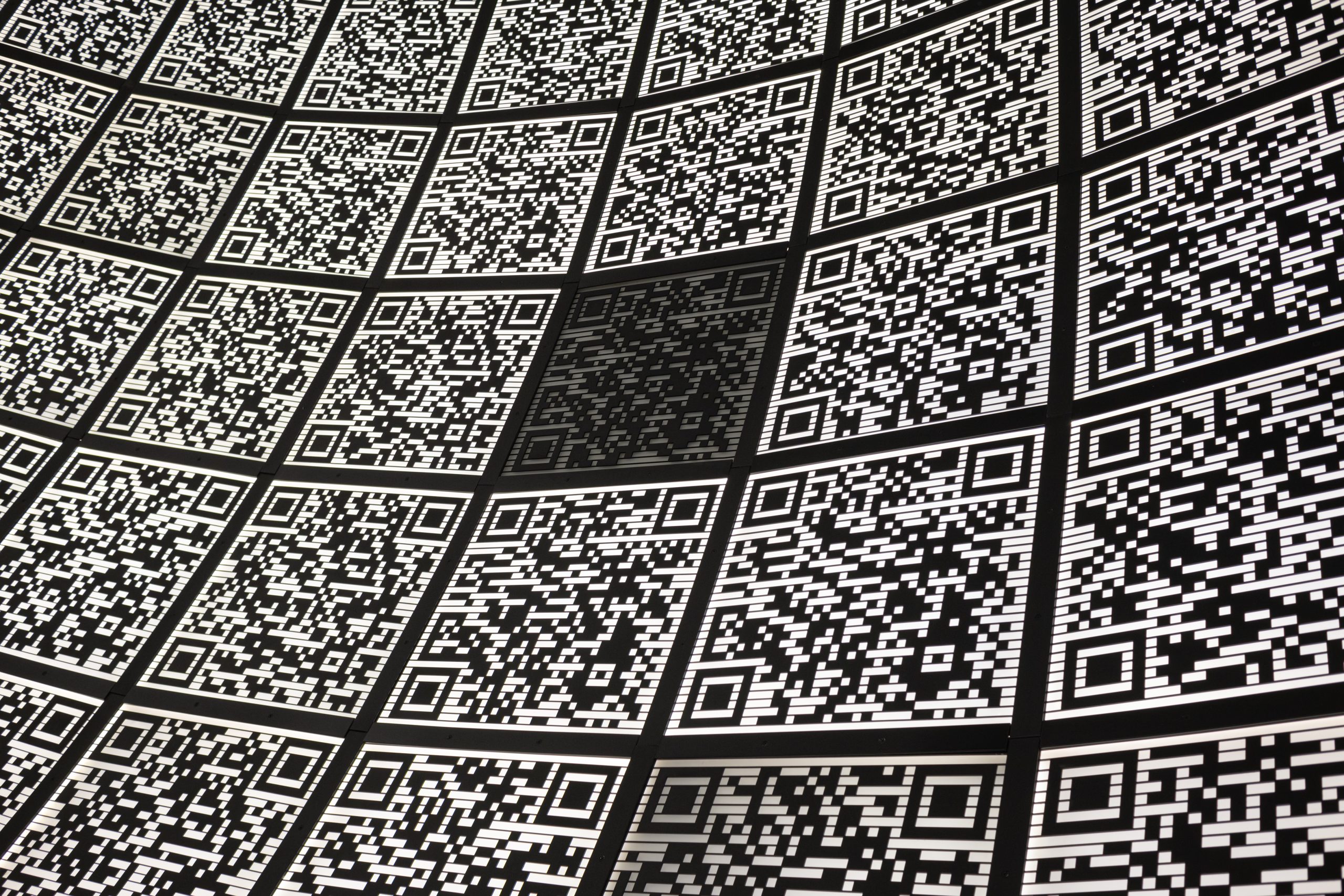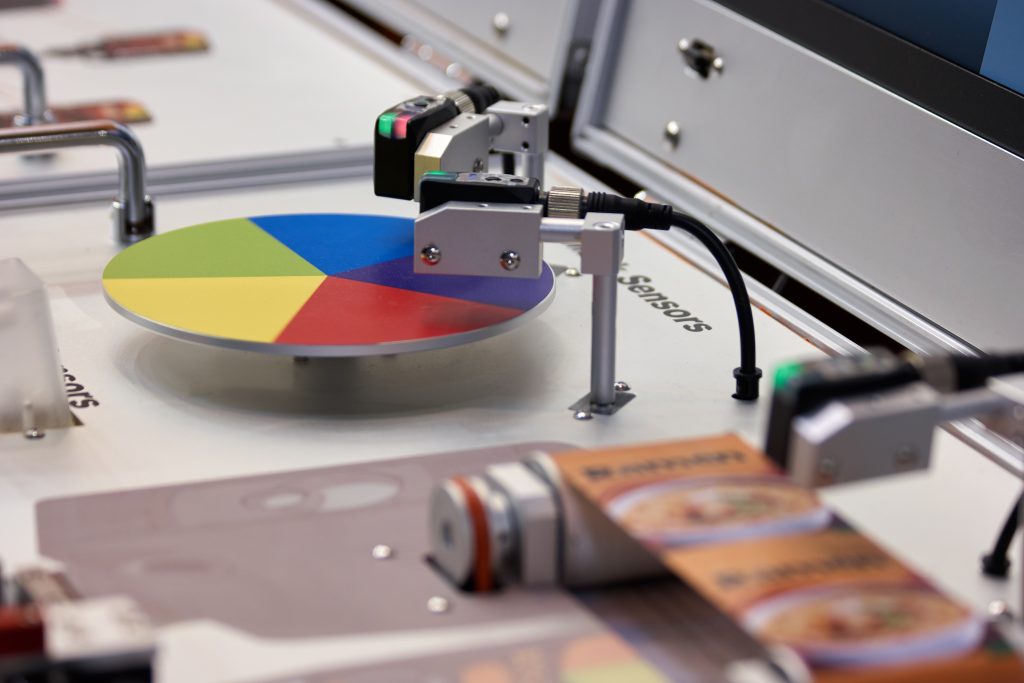Barcodes have been around for decades and are widely used in industries such as retail and logistics. However, with the rise of smartphones and the need for more versatile codes, QR codes have gained popularity. These codes can store much more information than traditional barcodes and can be easily scanned with a smartphone camera. But the innovation in printed codes doesn’t stop there, as new technologies are being developed to enhance their functionality and applications.
In this article, we will delve into the differences between barcodes and QR codes, explore the advantages and disadvantages of each, and discuss the emerging trends in printed codes. Whether you are a business owner looking to improve inventory management or a consumer curious about the technology behind the products you buy, this article will provide valuable insights into the world of printed codes.
What Is A Printed Code?
A printed code refers to a type of encoding that allows information to be represented visually and can be scanned or read by a device. These codes provide a convenient way to store and retrieve data quickly and accurately. There are various types of printed codes, including barcodes, QR codes, and alphanumeric codes.
Barcodes are the most commonly recognized printed codes, consisting of a series of vertical lines and spaces that represent a unique set of numbers or characters. They are extensively used in inventory tracking, retail sales, and logistics.
QR codes, on the other hand, are two-dimensional codes that can encode much more information than barcodes. They can store alphanumeric characters, special characters, and even entire URLs. QR codes are widely utilized in marketing campaigns, advertising, and mobile marketing.
Alphanumeric codes combine letters and numbers in their representation, providing a broader range of possibilities for data encoding. They find applications in fields such as inventory management, business cards, and credit cards.
The benefits of using printed codes are undeniable. They enable quick and easy data capture, minimize errors, improve efficiency, and enhance user experiences. Additionally, the versatility of printed codes allows for the creation of dynamic codes, meaning that the encoded information can be modified or updated as needed.
How Does A Printed Code Work?
A printed code, whether it’s a barcode or a QR code, operates through a process of generation and printing.
To generate a barcode, a code generator software or tool is used. This software converts alphanumeric data into a series of vertical lines and spaces. The generated barcode is then printed onto a label or directly onto a product or packaging.
Similarly, QR codes are generated using a QR code generator. These codes can store a larger amount of information, including URLs, special characters, and alphanumeric data. Once generated, the QR code can be printed on a variety of materials, such as paper, cardboard, or even plastic.
When it comes to printing, barcodes and QR codes can be printed using standard label printers or specialized barcode printers. These printers use thermal or inkjet printing technology to transfer the code onto the chosen material.
For QR codes, various graphic formats are supported, including JPG, PNG, and SVG. This allows for flexibility in integrating QR codes into different types of marketing materials. Additionally, QR codes can be printed with logos or colored designs, enhancing their visual appeal and branding potential.
Barcode Basics
Barcodes play a crucial role in today’s digital age, serving as a universally recognized method for identifying and tracking products. In simple terms, a barcode is a machine-readable representation of data, typically in the form of a series of vertical lines and spaces. These codes are generated using specialized software or tools known as code generators. By converting alphanumeric or numerical data into a unique barcode, businesses can streamline their inventory management, improve efficiency, and enhance the overall customer experience.
What Is A Barcode?
A barcode is a machine-readable representation of data in the form of parallel lines, spaces, or squares that can be easily scanned by a barcode reader. Its purpose is to provide a means to quickly and accurately identify items, track inventory, and facilitate efficient business operations.
The concept of barcodes dates back to the late 1940s, with the invention of the first barcode system by Norman Joseph Woodland and Bernard Silver. It gained popularity in the 1970s when the Universal Product Code (UPC) was introduced for use in retail. Since then, barcodes have become ubiquitous, being used in various industries, including manufacturing, logistics, and healthcare.
Types of Barcodes
There are different types of barcodes, each with its unique features and advantages tailored to specific uses and industries.
-
- Code 39 is a popular alphanumeric barcode that can encode uppercase letters, numbers, and some special characters. It is widely used in various industries, including healthcare and manufacturing.
- Code 128 is a high-density barcode that can encode all ASCII characters. With its ability to contain more data and provide excellent readability, Code 128 is commonly used for shipping and packaging labels and in the transportation industry.
- Interleaved 2 of 5 is a numeric-only barcode commonly used in logistics and warehouse operations. It is known for its compact size and high-speed scanning capability, making it ideal for inventory tracking and control.
- Universal Product Codes (UPC) and International Article Numbers (EAN) are standard barcodes used for product identification in retail. UPC codes are widely used in the United States, while EAN codes are used internationally. These barcodes enable efficient inventory management and streamline checkout processes.
- Another advanced type of barcode is the PDF417, which can encode larger amounts of data, including text, images, and even entire documents. It finds applications in identification cards, driver’s licenses, and postal services, where more data needs to be stored.
How To Read A Barcode?
To read a barcode, follow these step-by-step instructions:
1. Start by obtaining a barcode scanner. This can either be a handheld scanner or a scanner built into a smartphone or tablet.
2. Position the barcode within the scanner’s viewfinder or camera lens. Ensure the entire code is visible and well-lit.
3. Trigger the scanner by pressing the scan button or tapping the screen. The scanner will capture an image of the barcode.
4. The scanner will then analyze the barcode image and decode the information.
5. Once decoded, the barcode data will be displayed on the scanner’s screen or transmitted to a connected device, such as a computer or mobile app.
Benefits Of Using Barcodes For Businesses
Barcodes have revolutionized business operations by providing a range of benefits that enhance efficiency, ensure accurate data reading, and improve supply chain traceability.
One of the key advantages of using barcodes is the significant improvement in efficiency they offer. With just a simple scan, barcodes eliminate the need for manual data entry. This saves time, reduces human errors, and streamlines various processes, such as inventory management, product tracking, and order fulfillment.
Moreover, barcodes ensure accurate data reading. Unlike manual data entry, which can be prone to mistakes, barcodes provide a reliable and consistent way to capture and store information. This accuracy translates into improved decision-making, better inventory control, and enhanced customer service.
Barcodes also play a vital role in enhancing supply chain traceability. By using unique identification codes, businesses can easily track products throughout their journey, from manufacturing to delivery. This traceability improves visibility, allowing businesses to identify bottlenecks, detect inefficiencies, and optimize their supply chain processes.
Quick Response (QR) Codes Explained
Quick Response (QR) codes are becoming increasingly popular in various industries due to their versatility and convenience. These two-dimensional codes are designed to store and share information quickly and effortlessly. QR codes can contain alphanumeric characters, special characters, and even entire website URLs.
What Is A QR Code?
A QR Code, short for Quick Response Code, is a two-dimensional barcode that was developed by Denso Wave, a subsidiary of Toyota, in 1994. Initially used to track vehicles during the manufacturing process, QR Codes have since become widely popular for their ability to store substantial amounts of information.
Unlike traditional barcodes, QR Codes can store various types of data, including alphanumeric characters, special characters, and even binary data. This versatility has made them useful in a wide range of applications, from inventory tracking and supply chain management to mobile marketing campaigns.
QR Codes can be scanned and read using a smartphone or a dedicated code scanner. Once scanned, the stored information can be accessed quickly and effortlessly. This has made QR Codes increasingly popular in advertising campaigns, business cards, and even credit cards.
With their ability to store vast amounts of data in a small space, QR Codes have revolutionized the way information is shared. As technology continues to advance, QR Codes are likely to remain an important tool in the digital format, facilitating everything from inventory management to mobile marketing initiatives.
Types Of QR Codes
QR Codes are a popular type of barcode that can store various types of data and are commonly used in mobile marketing campaigns, inventory tracking, and advertising. However, there are several other types of QR Codes available that offer different features and uses. These include Aztec codes, Maxi codes, PDF417, and Semacode.
Aztec codes are two-dimensional barcodes that are designed to be versatile and compact. They can encode large amounts of data and are often used in applications where space is limited, such as on business cards or small product labels. Aztec codes have a high level of error correction and can be read even if a portion of the code is damaged.
Maxi codes are another type of two-dimensional barcode that is primarily used in transportation and logistics. They can store large amounts of information, including tracking numbers and routing details. Maxi codes are highly reliable and can be read quickly, making them ideal for inventory tracking and supply chain management.
PDF417 barcodes are widely used for applications that require high-density data storage. They can encode large amounts of alphanumeric data and are commonly used in identification cards, driver’s licenses, and shipping labels. PDF417 codes have a high level of error correction, allowing them to be read accurately even if parts of the code are damaged or dirty.
Semacode is a type of barcode that is primarily used for mobile applications. It can encode URLs, phone numbers, and contact details, which can be easily accessed by scanning the barcode with a smartphone. Semacodes are designed to be compact and easily readable, making them ideal for mobile marketing campaigns and digital advertisements.
How To Read A QR Code
To read a QR code, you will need a barcode scanner or a mobile phone with a QR code reader app installed. Follow these steps to read a QR code:
1. If you are using an iOS device, open the camera app. For Android devices, you can use a QR code reader app such as QR Code Reader or Barcode Scanner.
2. Position your device so that the QR code is within the camera’s viewfinder.
3. Hold your device steady and make sure the QR code is well-lit and clear in the camera’s frame.
4. Wait for the camera or QR code reader app to automatically detect the QR code. It may take a few seconds for the app to process the code.
5. Once the QR code is recognized, a notification will typically appear on your device’s screen. Tap on the notification to open the encoded information.
Benefits Of Using QR Codes For Businesses
QR Codes have become increasingly popular in the business world, thanks to their versatility and numerous benefits. These barcode-like images can be scanned by smartphones and other devices, allowing businesses to gather feedback, increase customer engagement, and effectively promote their brand.
One of the key advantages of QR Codes is their ability to gather feedback. By incorporating a QR Code on customer receipts or marketing collateral, businesses can direct customers to online surveys or feedback forms. This enables businesses to collect valuable insights and make necessary improvements to their products or services.
QR Codes also serve as a powerful tool to increase customer engagement. By linking QR Codes to multimedia content such as videos, infographics, or augmented reality experiences, businesses can offer a more interactive and immersive experience to their customers. This not only enhances customer satisfaction but also captures their attention, making it more likely for them to share the experience with others.
Alphanumeric Codes Explained
Alphanumeric codes are a type of code that combines both letters and numbers, allowing for a wider range of characters. These codes are commonly used in various industries, including inventory tracking, marketing campaigns, and data management. The use of alphanumeric codes offers several advantages, such as providing a larger pool of unique codes for better identification and organization.
What Are Alphanumeric Codes?
Alphanumeric codes are a type of code that combines numbers and letters to represent information. Unlike other code types, alphanumeric codes have the ability to store a larger amount of data due to their inclusion of both numbers and letters.
Alphanumeric codes come in different modes, such as Numeric mode and Alphanumeric mode. In Numeric mode, the code can only store numeric characters, allowing for the representation of numerical data. On the other hand, Alphanumeric mode enables the inclusion of both numbers and letters, making it possible to store a wider range of information, such as names, addresses, and product descriptions.
With their versatility in data storage, alphanumeric codes have found applications in various industries. From inventory tracking and product identification to marketing campaigns and mobile marketing, these codes play a pivotal role in facilitating efficient data communication. The combination of numbers and letters in alphanumeric codes provides a more comprehensive representation of information, ensuring the accuracy and reliability of the data being conveyed.
Types Of Alphanumeric Codes
Alphanumeric codes, which consist of both numbers and letters, are widely used in various industries for different purposes. There are several types of alphanumeric codes commonly used:
1. Product Identification Codes: These codes uniquely identify products and are commonly used in inventory management and tracking systems. Examples include Universal Product Codes (UPCs) and European Article Numbers (EANs).
2. Postal Codes: Postal or ZIP codes are alphanumeric codes used to facilitate efficient mail delivery. These codes help ensure accurate sorting and routing of mail within a specific geographic area.
3. Vehicle Identification Numbers (VINs): VINs are alphanumeric codes used to identify individual motor vehicles. These codes provide information about the manufacturer, year of manufacture, model, and other vehicle-specific details.
4. Security Access Codes: Alphanumeric codes are used as security access codes in various systems, such as building entry systems, online user accounts, and computer networks. These codes help ensure authorized access and protect sensitive information.
5. Patient Identification Codes: Health organizations use alphanumeric patient identification codes to uniquely identify patients and maintain accurate medical records. These codes ensure proper patient identification and enable efficient retrieval of medical information.
How To Read An Alphanumeric Codes?
Alphanumeric codes consist of both numbers and letters and are widely used in various industries for different purposes. These codes play a crucial role in identifying, categorizing, and managing various aspects of businesses, contributing to streamlined operations and improved efficiency.
There are several types of alphanumeric codes commonly used. One type is product identification codes, such as Universal Product Codes (UPCs) and European Article Numbers (EANs), which uniquely identify products and are essential in inventory management and tracking systems. Postal or ZIP codes are another type of alphanumeric code used to facilitate efficient mail delivery by ensuring accurate sorting and routing of mail within a specific geographic area.
Alphanumeric codes are also used as vehicle identification numbers (VINs) to identify individual motor vehicles, including information about the manufacturer, year of manufacture, model, and other vehicle-specific details. In addition, these codes are used as security access codes in various systems, such as building entry systems and online accounts, to ensure authorized access and protect sensitive information.
Health organizations utilize alphanumeric patient identification codes to uniquely identify patients and maintain accurate medical records, enabling efficient retrieval of medical information.
Benefits Of Using Alphanumeric Codes For Businesses
Using alphanumeric codes in business operations offers numerous benefits, including improved traceability, enhanced supply chain efficiency, and increased consumer protection. These codes play a crucial role in identifying and tracking products throughout their lifecycle, ensuring accurate and reliable information at each stage.
One of the key advantages of alphanumeric codes is their ability to improve traceability in the supply chain. With unique codes assigned to each product, businesses can easily track inventory, monitor movement across different locations, and identify potential issues or bottlenecks. This enables swift action to be taken, minimizing disruptions and optimizing efficiency.
In addition, alphanumeric codes based on globally recognized standards, such as those set by GS1, enhance interoperability between different stakeholders and countries. By using a standardized approach, businesses can seamlessly exchange information with partners, suppliers, and customers, fostering collaboration and streamlining processes.
Accurate coding of alphanumeric codes also improves inventory tracking capabilities. By efficiently managing stock levels and replenishment cycles, businesses can reduce costs associated with excess inventory or stockouts. This leads to smoother operations and increased customer satisfaction.

Conclusion
In conclusion, printed codes such as barcodes, QR codes, and other emerging technologies have revolutionized the way we interact with products and information. They have become a ubiquitous part of our everyday lives, from shopping to marketing and beyond.



